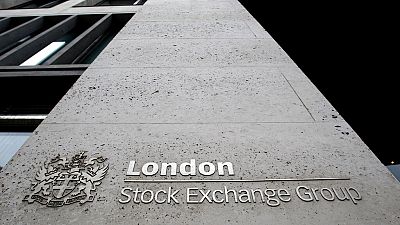Germany's surprise contraction in the second quarter this year was mainly due to a halt in equipment and buildings investments, as the industrial sector continues to weaken under pressure from rising interest rates.
The second estimate for the quarter-on-quarter Eurozone gross domestic product (GDP) growth rate for the second quarter of 2024 has been released, coming in at 0.3%. The figure was the same as the previous quarter, as well as in line with forecasts.
France grew at 0.3% this quarter, the same as the previous quarter. Although the country could potentially see an economic boost from the Olympics in the third quarter of the year, this is likely to be capped somewhat by ongoing political uncertainty.
Spain's GDP growth also came in at 0.8% for the second quarter of the year, which was the same as the previous quarter. Lithuania also grew at the same pace as Q1 2024 this quarter, at 0.9%.
Belgium's GDP dropped slightly to 0.2%, down from 0.3%, whereas Portugal saw a more marked fall to 0.1% this quarter, from 0.8% in the previous quarter. Other countries which saw a small drop in growth this quarter included Cyprus, which recorded a GDP growth rate of 0.7%, down from 1% and Slovakia, coming in at 0.4%, down from 0.6%.
Italy saw a slight dip in growth, at 0.2% in Q2 2024, down from 0.3% in the previous quarter. ING estimated that this weakness is likely caused by a decrease in net exports and industrial weakness.
Ireland's economy bucks the trend with growth
On the other hand, Ireland saw a considerable bump in growth this quarter, with GDP coming in at 1.2%, up from 0.7% in the first quarter of the year. Finland also recorded a small hike at 0.4% versus 0.2%.
However, the eurozone's largest economy, Germany, saw a surprise contraction of 0.1%. This was compared to a 0.2% growth in the first quarter of the year.
The second estimate for the year-on-year eurozone growth rate for the second quarter of 2024 was revealed to be 0.6%, in line with preliminary estimates, and above the 0.5% seen in the previous quarter. This was also the highest growth rate in five quarters.
According to the European Commission, the eurozone economy is likely to expand 0.8% in 2024.
The preliminary estimate for the quarter-on-quarter eurozone employment change figures for the second quarter of 2024 were also released on Wednesday. The number of people with jobs increased 0.2% to 170.183m in the second quarter, according to Eurostat, compared with the last quarter. This was in line with analyst expectations, but was slightly down from the 0.3% seen in the previous quarter.
The French CAC 40 index rose by 0.43% on Wednesday mid-morning, following the GDP and unemployment data releases, whereas the German DAX index inched up 0.40%.
German economy sees surprise drop in growth in second quarter
The German economy's surprise contraction in the second quarter this year was mainly due to a halt in equipment and buildings investments, as the industrial sector continues to weaken under pressure from soaring interest rates.
According to the European Commission, the German economy is now likely to expand 0.1% this year. If so, this would be a rebound from the 0.3% contraction seen in the last year, as domestic demand starts increasing gradually.
However, investments are still expected to stay considerably below pre-pandemic levels, due to increasing financing costs. Exports are also likely to remain subdued this year, according to the Federal Statistical Office.















